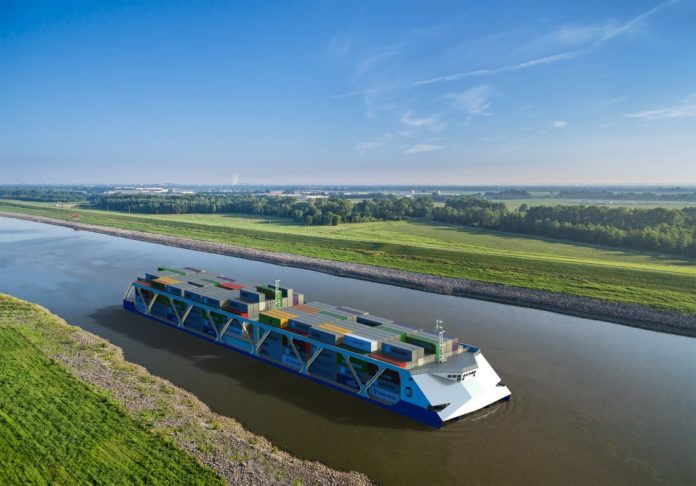As many as four self-propelled container vessels fueled by Liquefied Natural Gas could be traversing the Mississippi River by 2022, if a plan by the Plaquemines Port Harbor and Terminal District and American Patriot Holdings moves forward.
Their partnership, forged in 2017, is paving the way for the LNG-fueled vessels to carry shipping containers to a large network of Midwestern ports. In that scenario, the Plaquemines port would serve as the hub for large Panamex-style container vessels coming through the widened Panama Canal.
APH plans to begin manufacturing the container vessels by 2020 and be “fully mature” with up to 12 vessels within five years. “The vessel has gone through all of our model testing and we are ready to finalize the specifications and send it to the shipyard,” says Sal Litrico, CEO of American Patriot Container Transport, an APH subsidiary. “It takes about 20 months to build the first vessel and we can take delivery between 20 to 24 months on each subsequent vessel.”
With an upriver speed of 13 knots, each container vessel would have a carrying capacity of 2,500 TEUs and be capable of making a round trip from Plaquemines to St. Louis in 10 days. Litrico says his company was attracted to LNG’s long-term cost benefits versus conventional fuel sources, as well as its environmental attributes.
He hopes that the Plaquemines port will serve as a regional gateway terminal that is connected strategically with other ports upriver, each with their own state-of-the-art container terminals. Port officials in Jefferson County, Missouri, have already signed a memorandum of understanding to be part of the new shipping system. Similar agreements were formally inked in St. Louis with five other regional transport and port agencies.
Sandy Sanders, executive director of the Plaquemines port, says the initiative is in direct response to the growing demand for containerized cargo on the Mississippi River and would deliver the lowest delivery costs for containers throughout the Midwest. His greenfield port, which has attracted some $19.5 billion in private investment, has a 50-foot-plus river draft that is more than adequate for the Panamex-style vessels.



